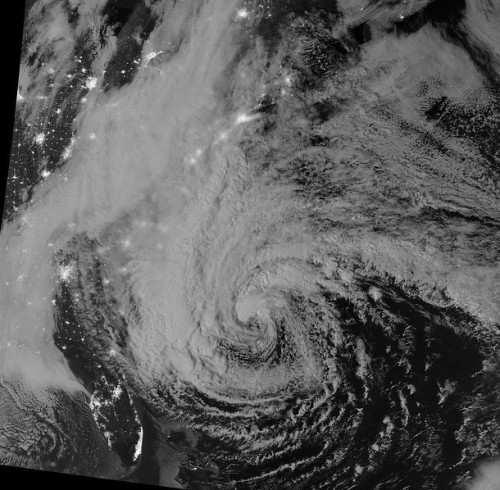If you live on the east coast you are aware of the horrible aftermath of Hurricane Sandy. The shoreline in the northeast was completely destructed and altered from the wrath of mother nature. Today contributions and efforts to reconstruct public and private properties are still in need. The direction and size of this super storm had many scientists and east coast civilians concerned and questioning why was this storm so large? Journalist Rob Williams from The Independent.com explains the description of Hurricane Sandy, “The storm has 175 miles of hurricane force winds stretching out from its centre, combined with tropical storm force winds extending 520 miles”.
The distress from this disaster will not only affect American coastlines, but also in time will destroy other shorelines around the globe. One of the main leads that scientists are relating to the strength of Hurricane Sandy is global warming. As our earth takes in constant CO2 emissions and greenhouses gases our atmosphere becomes considerably warmer. From this ice caps are melting at an increased rate, which in result creates ocean tides to rise. This is one effect from global warming that scientists are linking to the strength of Sandy. The Huffinton post online stated “There are three different ways climate change might have influenced Sandy: through the effects of sea level rise; through abnormally warm sea surface temperatures; and possibly through an unusual weather pattern that some scientists think bore the fingerprint of rapidly disappearing Arctic sea ice.” While the argument is relevant that the earth is warming naturally though earth cycles the pollution that we emit on a daily basis is not helping.
Some may not believe global warming is an issue, but there is no disagreement on the fatalities and damage that Sandy accomplished. The list is extensive and the results are gruesome to what happened last fall. One hundred and Ten mortalities occurred due to accidents related to the storm. The 90-mile an hour gusts and H2O submerged nearly all shorelines, and destroyed towns. Allen Breed and Tom Hays from the Huffington post stated “8.2 million people across the East were without power. Airlines canceled more than 15,000 flights around the world.”
Overall, the consequences of Hurricane Sandy were detrimental to many Americans in the east coast. From the cumulative heat and pollution within the atmosphere and the chain reaction in the rising of the oceans will only increase the occurrence of super storms around the world. This is an issue that we must accept and learn how to prevent so that future generations do not have to live in a world of extreme danger within natural disasters.

Erin,
When reading your blog, I enjoyed how you started off by claiming a personal inclination towards the topic, and how it affected the people on the East Coast. Specifics give the reader good reason why to accept your argument on how global warming was a major factor in the extravagant Hurricane Sandy. Also, your sources are very well incorporated into your writing. Nicely done
Anion Exchange Membranes,Thickness:100m-130m,SheetResistance:4.0·cm2-7.0·cm2 – Alfa Chemistry focuses on the development and manufacture of various ion exchange resin products, including various cation exchange resins, anion exchange resins, mixed bed resins, adsorption resins, nuclear grade resins, and so on.